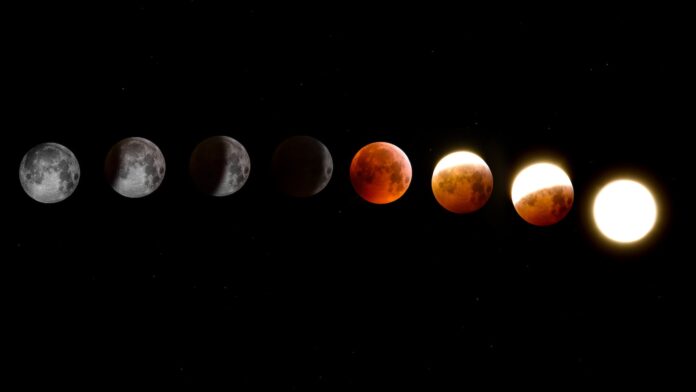The Solar System is Differentiated Because
As an expert in the field of astronomy, I’ve always been fascinated by the sheer diversity and complexity of our solar system. The differentiation of the solar system is a captivating topic that delves into why each planet and celestial body is unique. It’s a concept that’s rooted in the formation and evolution of the system itself.
The solar system didn’t just randomly pop into existence. It’s the result of billions of years of cosmic processes, with each planet and body undergoing its own unique journey. This evolutionary process is what has led to the differentiation we see today, with each planet bearing distinct characteristics and traits.
From the fiery, inhospitable surface of Mercury to the icy, mysterious landscapes of Pluto, each planet in our solar system tells a unique story. This diversity is not just limited to the planets, but extends to moons, asteroids, and comets as well, making our solar system a vast, fascinating field of study.
Definition of Differentiation
Now let’s delve into the meaning of differentiation in the context of the solar system. Differentiation is a cosmic process that’s been in the works for billions of years. It’s the phenomenon that has led to the unique traits and characteristics of each celestial body in our solar system.
When we say “the solar system is differentiated because”, we’re referring to the reason why each planet, moon, asteroid, and comet has its distinct attributes. This differentiation is not random. Rather, it’s the result of specific geological and chemical processes that took place over a massive timescale.
- These processes include the heating and cooling of celestial bodies
- The movement and interaction of their internal geological layers
- The impacts of space weathering and cosmic radiation
When we talk about differentiation, we’re not just talking about physical differences. We’re also talking about differences in composition, structure, and history. This concept is crucial to understanding the solar system’s diversity and the reasons behind it.
So, the next time you gaze up at the night sky and marvel at the distinct shining stars and planets, remember they’re not just different because they’re far apart. They’re different because of the complex, long-term cosmic processes that have shaped each one into a unique celestial body. These processes are still ongoing, continuously shaping and re-shaping our solar system.

The Formation of the Solar System
The formation of the solar system is a phenomenal tale of cosmic processes, spanning billions of years. To understand why and how the solar system is differentiated, it’s important to delve into its genesis.
Approximately 4.6 billion years ago, a giant molecular cloud in our galaxy collapsed, possibly due to the shockwave of a nearby supernova. This event triggered what’s known as the solar nebula theory. The collapse of this cloud led to the formation of a spinning disk of dust and gas, with a dense, hot core at the center.
Let’s talk about why the solar system is differentiated. As the spinning disk continued to collapse under its own gravity, the core became hot enough to ignite nuclear fusion, leading to the birth of our Sun. The remaining dust and gas orbiting around the Sun gradually came together to form the planets, moons, asteroids, and comets.
However, these celestial bodies didn’t form uniformly. Instead, they underwent a process known as planetary differentiation. This process, driven by heat from various sources like radioactive decay, gravitational compression, and asteroid impacts, caused different substances to migrate to different parts of a body.
For instance, heavier elements like iron and nickel moved to the core, while lighter elements such as silicon, oxygen, and other trace elements formed the mantle and crust. This is why we see such diversity in the composition and physical characteristics of the planets and their moons today.
Understanding this differentiation is fascinating. It provides a glimpse into the cosmic processes and the immense timescales involved, making the study of our solar system all the more intriguing.
Differentiation in the Inner Planets
Venturing into the inner planets, we see a clear example of how the solar system is differentiated because of the various cosmic processes.
These bodies, closest to our Sun, had a fiery start. As they formed, heat from the Sun, coupled with heat generated internally from radioactive decay, caused them to melt. This melting kick-started the process of planetary differentiation.Heavier elements like iron and nickel sunk to form the core, while lighter elements like silicate minerals rose to form the crust and mantle. This is how Earth, Mars, Venus, and Mercury got their layered structure with distinct cores, mantles, and crusts.The inner planets also showcase a unique aspect of differentiation – the lack of certain elements. These planets are missing lighter elements like hydrogen and helium. Why is that? It’s because of the Sun’s intense heat. It was so hot close to the Sun that these light elements simply evaporated and were swept away by the solar wind, a stream of charged particles emanating from the Sun.
Our understanding of planetary differentiation is not just academic. It has practical implications for space exploration. By understanding the composition and structure of different planets, we can figure out where to look for valuable resources like metals, water, and possibly even signs of life.
So, next time you gaze up at the night sky, remember that every twinkling light you see is part of a grand cosmic story of formation and differentiation. And that story is still being written, with new discoveries being made and mysteries unraveled every day.
So, it’s clear that the solar system’s differentiation is a tale of cosmic processes unfolding over billions of years. From a collapsing molecular cloud to a spinning disk of dust and gas, the birth of the Sun and celestial bodies was no simple feat. Planetary differentiation played a crucial role, causing substances to migrate and creating the diverse composition we observe in our planets and moons today.The inner planets, with their iron and nickel cores, are testament to the heat-induced melting and separation of elements. Meanwhile, the outer planets, with their hydrogen, helium, and volatile substances, showcase the influence of their birthplace in the solar system.
This understanding isn’t just for the sake of knowledge. It has practical implications for space exploration too, helping us identify resources and potential signs of life. So, the next time you gaze up at the night sky, remember, you’re looking at a cosmic dance of differentiation that’s been going on for billions of years.


